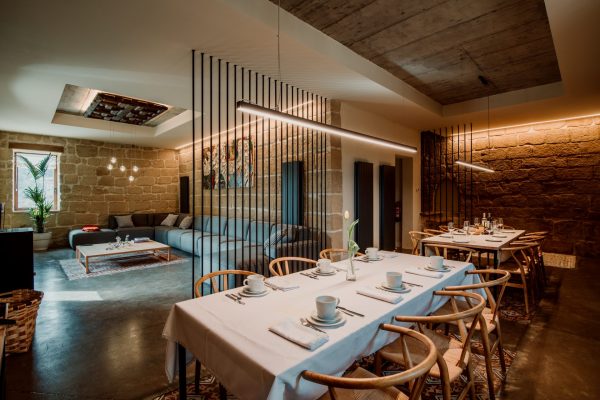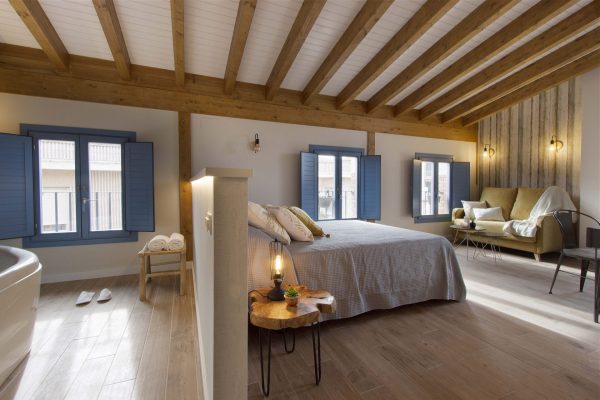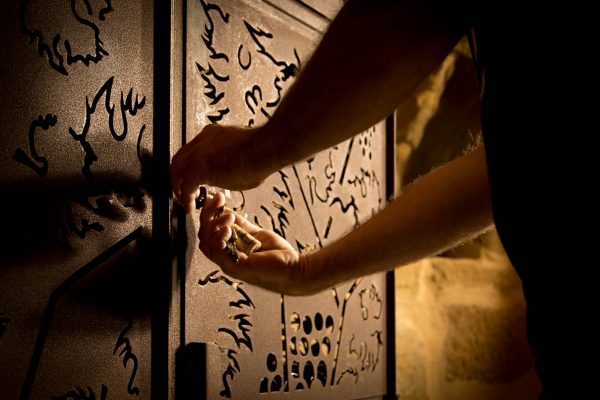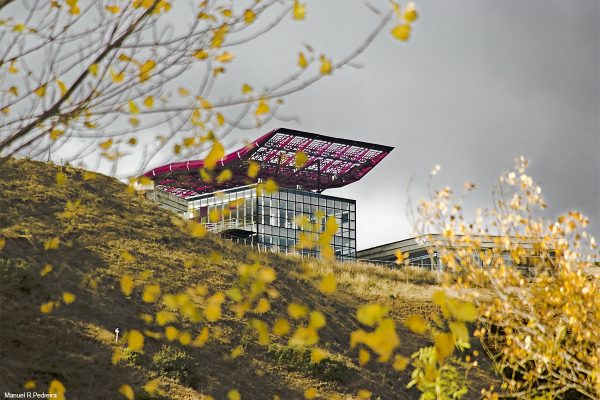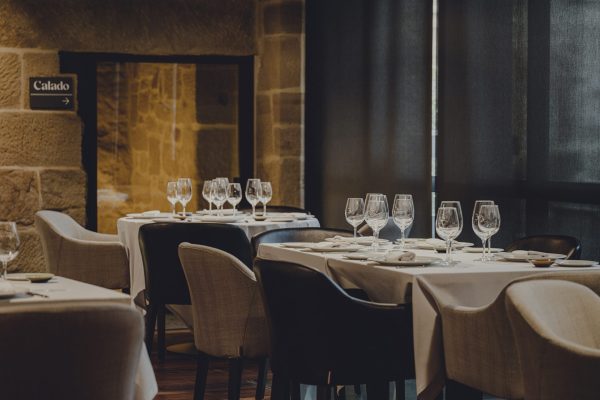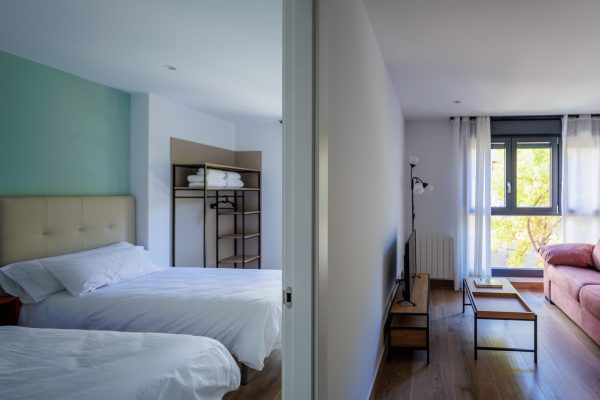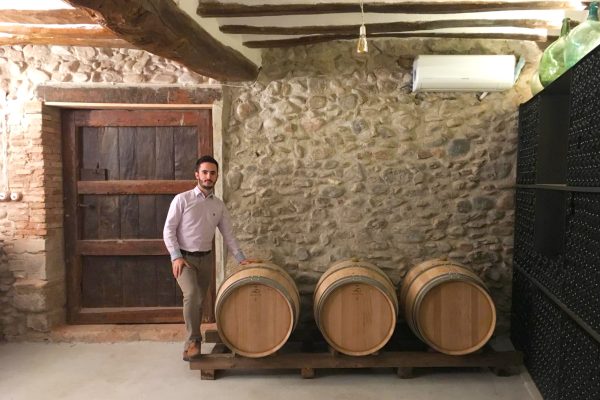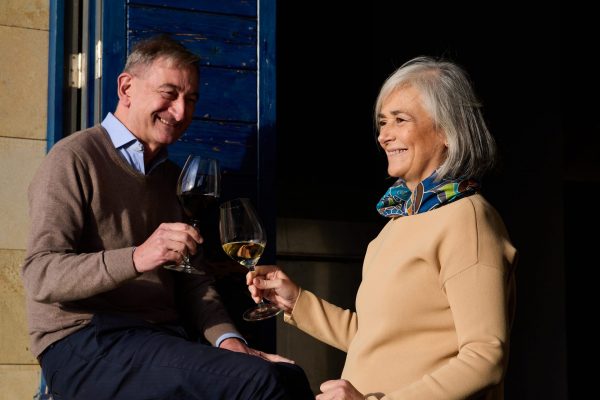La Rioja is much more than Logroño, its capital. And although sometimes a quick getaway does not allow you to get to know the region in depth, it is always worth taking the time to visit it. to rural tourism as this gives us a more complete picture of the territory.
So then you will find 5 towns near Logroño (less than 30 minutes away) full of history, nature and heritage.
You won't want to miss them.
1. Fuenmayor, a village of Renaissance palaces

Fuenmayor is only a few kilometres away from 13km from Logroño and has 3100 inhabitants.
Fuenmayor's most striking features are his imposing palacesas well as its religious heritage.
Church of Santa María in Fuenmayor

The Church of Fuenmayor is a large church with a hall plan. built in the 16th century by Juan Martínez de Mutio.
The interior is a large, open-plan space of great solemnity. The the main altarpiece is in Plateresque style very original and rare, which attracted the attention of Jovellanos when he visited the temple in 1795.
The sacristy, rehabilitated as a parish museumAmong other treasures, it holds a Magdalena by Juan Carreño de Miranda.
Cristo de Fuenmayor Chapel and Bridge

Situated "outside the walls of the town" on the old exit of the town towards Logroño, it is a work of the 17th century.
The main altarpiece is baroque from the first half of the 18th century and the titular Crucifix made by Juan de Lorena in 1549.
It highlights a original neoclassical canvas from the early 19th century, which depicts St. Nicholas of Bari saving three children from drowning in a "comportón", and a exvoto box which recalls the miracle that Christ performed by resuscitating a child who had drowned in the Palace of the Urbán del Campo.
Next to the hermitage of El Cristo and built in ashlar of the XVIth century is the bridge of Christ, where the original ashlars and a trunk with a semicircular arch can be seen.
In the immediate vicinity is the Christ Fountainformer watering trough for cattle.
Hermitage of San Martín now the Parish House
The 16th-century hermitage of San Martín was converted into the current Parish Housewhich hosts a wide range of assembly hallThe parish premises for catechesis and parish activities and the parish priest's living quarters.
When the congregation of the Daughters of the Cross arrived at founding the convent in 1917The hermitage was deconsecrated and had come to be used as a dance hall and even as a stable.
Ermita del Carmen Hermitage and Recreational Area

The hermitage of Carmen, highly venerated by the people of Fuenmayor, dates back to the XVIIIth century and is located a couple of kilometres from the village on the Estación road.
Inside, in addition to the niche with the image of the Virgin, there are two stone figures depicting San Joaquín and Santa Ana.
In the sacristy there is a Baroque Virgin of Carmenrepainted, from the mid-18th century and Crucifixes from the 17th century.
In addition to its artistic and religious value, the hermitage is also a The area is frequented by walkers and has a recreational area.
Palace of the Marquises of Terán in Fuenmayor

Situated on the street of the same name, it is one of the most impressive civil buildings in La Rioja.
Built in the XVIIIth century with balconies and a continuous gallery on the upper floor by the Marquises of Terán, it was later acquired by D. Francisco Antonio de Tobía y Ubago, a wealthy stockbreeder.
Since 1788 it has been the headquarters of the Royal Board of Harvesters of La Rioja, which can be considered the seed of the current Rioja Designation of Origin.
Fernández Bazán Palace

Located in front of the churchis an imposing building of the XVIIIth century with an almost baroque façade crowned with a coat of arms and an image of San Francisco.
It is known as "the Fonda as this was their activity during the 1960s.
Renaissance palace, one of the oldest in Fuenmayor.
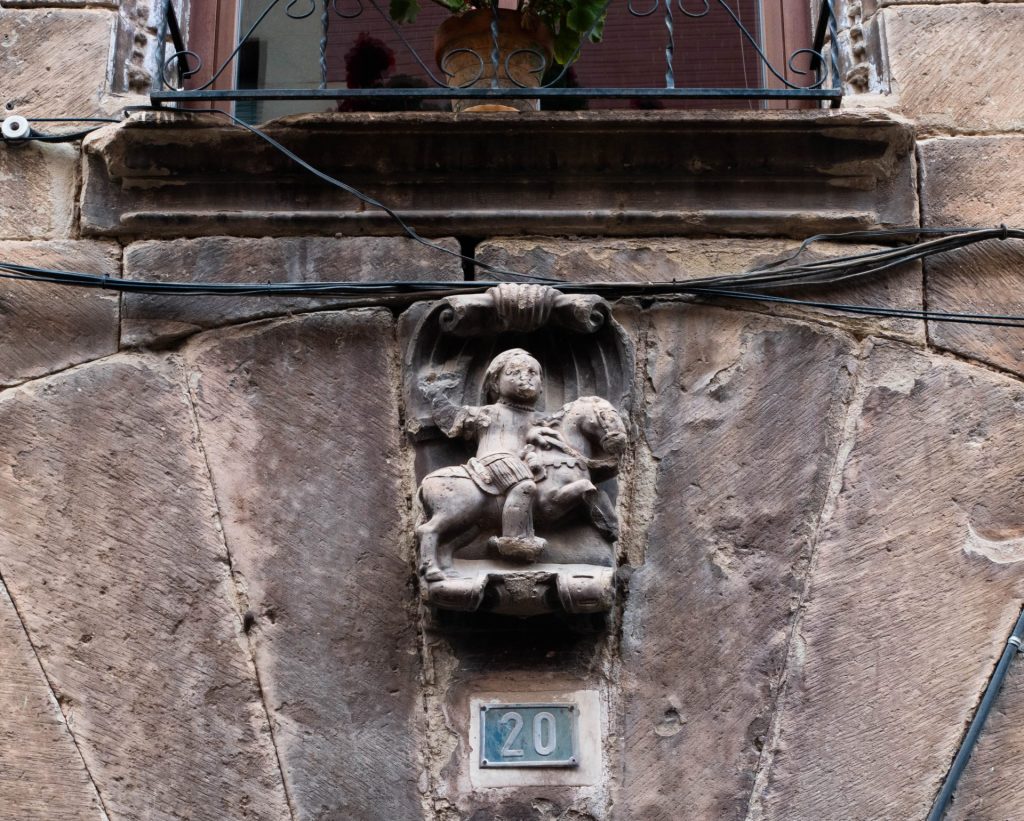
This palace has a inscription of 1530 It is one of the oldest buildings in Fuenmayor and its façade is in perfect condition.
The following appear in its decoration reasons related to the Camino de Santiago like a pilgrim Santiago on horseback and also skulls and ghostly corbels.
Palacio de los Urban del Campo witness of a resurrection
Located in in the heart of the old townis another of Fuenmayor's oldest buildings, built in the 15th centuryalthough the coat of arms, the wrought ironwork and the eaves with carved canes date from the 17th century.
At the well of this house drowned the youngest son of the lords rising from the dead by the intercession of the Cristo de la Veracruz, as is recalled on a canvas votive offering in the hermitage of the Christ.
Casa Navajas and a Centennial Cedar

Manor house of the important Navajas familylocated in the old Plaza del Coso, which dates back to the 16th century, although it was renovated in the 19th century.
The former gardens of the house are now a municipal park that preserves a centenary cedar of Lebanonincluded in the catalogue of singular trees of La Rioja.
El Portalón another Renaissance Palace

Once again we come across another Renaissance palace of early 18th century located in the centre of the Calle Mayor Baja.
It presents a rich façade with three coats of armsThe house is richly decorated and has balconies with beautiful ironwork.
Gran Coliseo Cinema of Fuenmayor

The "Grand Colosseum" was built in the early the thirties by the Fuenmayor businessman Alejandro Navajas, who turned to his friend Secundino ZuazoThe building was built by one of the most important architects of the time.
The innovative techniques used in its creation made it possible to construct the first cinema-theatre in Spain that, together with a sister project in Madrid, has the amphitheatre hanging, without columns in the stalls.
It had a capacity of 555 seats and was equipped with the recent invention of the sound cinema. It opened in 1931 with films such as: "Trafalgar", "The price of a kiss", Prim", "The God of the Sea", "Prim", "The God of the Sea"., "Fatality" y "The Harriers.
Theatre performances were also programmed, some of them with renowned artists such as Antonio Molina, Gina Baró, Concha Velasco o Fernando Esteso.
Gradually, television and other inventions meant that the halls of the "Gran Coliseo" became increasingly empty and The company was closed in February 1991.
The City Council acquired it and rehabilitated in 1992 giving way to a modern and functional theatre.
Let's continue with another of the villages near Logroño and just 5 kilometres from Fuenmayor.
2. Navarrete and its Medieval Hospital on the Pilgrim's Way to Santiago de Compostela

Navarrete is at 14km from Logroño and has a total of 3,000 inhabitants.
It is a village marked by the The Way of St. James as this is the first village that pilgrims come across after Logroño.
In Navarrete there is a pottery tradition This was a deep-rooted economic activity of great importance for the town in past centuries.
Ruins of the old medieval hospital of San Juan de Acre

Leaving La Grajera behind, the pilgrims arrive at Navarrete and the first thing they come across are the ruins of the former hospital of San Juan de Acre which was demolished in the 19th century.
Your Romanesque style doorway was preserved and is today the gateway to the Navarrete cemetery.
Church of Santa María de la Asunción

This church was begun in 1553 and was not completed until the 17th century.
It is located in the highest area of Navarrete and consists of three naves and an imposing baroque altarpiece.
In the sacristy of the parish church is kept a famous 16th century Flemish triptych which is regularly exhibited, and you can also visit a display with rich gold work, ivories and relics of various saints, as well as a copy of the Holy Shroud from the 16th century.
Santa María del Buen Suceso Hermitage

The ruins of the hermitage of Santa María del Buen Suceso are located to the south of the municipality, in the direction of Entrena. On its façade there are reliefs that refer to the pilgrims on the Pilgrims' Route to Santiago de Compostela.
Hermitage of Santa María de Jesús

For its part, the hermitage of Santa María de Jesús is located by the cemeteryin the middle of the Pilgrims' Route to Santiago de Compostela. A few years ago the pilgrimage to this hermitage was revived, taking place on the first Sunday in September.
Next to it, the door of St. John of Acre Hospital as a entrance to the Navarrete cemetery.
The wall of Navarrete
The 13th century marked a population growth for the town of Navarrete, derived from the privileges linked to the charter granted in the 12th century.
So it is most likely that in the 14th century the defensive system reinforced the original structure and became fully defined. This led to the construction of the wall, the remains of which can still be seen today.
This defence system would be composed of a castle, of which today not even the ruins are left, a wall with seven gates, some towers and a cellar surrounding area with bridges for access.
The remains of the wall can be seen in sections on the la Cruz, Plaza Donantes de Sangre and Abadía Streetsas well as the remains of a door at the Plaza del Arcoand some possible threads of the remains of a tower in Santiago Street.
Palace and the Count's cove

The draught is currently owned by the municipality and belongs to the palace where the municipal offices are located.
This fretwork extends from Plaza Donantes de Sangre to Nueva Street. The palace with ashlar façadeIt is integrated within the wall belt.
The interior consists of two heights and is built in ashlar and brick with semicircular vaults.
The draft has been restored recently and is used for small shows and exhibitions.
Navarrete is one of the villages near Logroño where you can find the Way of St. James.
3. Clavijo a Village of Legend near Logroño
Clavijo is located at 15,6km from Logroño and currently has 270 inhabitants.
It is known for its castle and the legendary battle of the reconquest between Ramiro I of Asturias and the Muslims.
Clavijo Castle and its legendary battle
Clavijo Castle is pre-10th century It is unclear whether it was built by the Christians or by the Arabs. Today only a few walls remain.
It was in the vicinity of this fortress that the mythical Battle of Clavijo of the Christian reconquest led by King Ramiro I of Asturias against the Muslims, on 23 May 844, and in which the Apostle James appeared on his white horse.
As usual, the fortress was erected in a strategic location. on a big rock which is currently used to climbing.
Monastery of San Prudencio of Monte Laturce
The Ruins of the Monastery of San Prudencio of Monte Laturce are located at 800 m above sea level and can be reached from Clavijo via a dirt track.
There is evidence that the monastery was already in existence in the 10th century and the owners of the monastery, the lords of Cameros, had their pantheon there.
With the disentailment of Mendizábal in 1836, was abandoned and his possessions sent to the Co-cathedral of Santa María de la Redonda in Logroño.
Royal Basilica of Santiago
On the slopes of Mount Laturce, at an altitude of 945 m above sea level, is the Santiago Chapel. It was built in the XVIIIth century of ashlar and brick, replacing an earlier hermitage built by King Ramiro.
Parish Church of the Assumption
The Church of the Assumption was built in ashlar stone between the XVI and XVII, It was dedicated to Our Lady of the Annunciation until 4 September 1885.
In the central body there is an image of the Virgin Motheron its right side the image of San Mames (once the patron saint of the village) and on the left side the image of San Roque.
On one of the side altars is the image of the Virgin Mary. Our Lady of HopeThe 13th century, from the Monastery of San Prudencio.
Temple of the Union
It was built in 1965 under the direction of the Logroño architect and priest, Gerardo Cuadra, winner of the 2004 Fine Arts Award of La Rioja. The Temple of La Unión has been nominated for the among the most important monuments of 20th century Spanish architecture.
It is a rural church consisting of a main space for the celebration of worship; a secondary space, linked to the previous one, for private Eucharistic devotion; a small area for penitential sacraments (baptism, confession); a small atrium; sacristy and a free-standing bell tower.
In the design and subsequent construction of the church, the author himself comments, three sections stand out that have been especially careful: the hierarchisation of spaces and volumesThe assessment of the different elements by light and the integration of the new architecture in the rural environment.
Ermina de Nuestra Señora de San Román
The Hermitage of Our Lady of San Roman is attached to the Municipal Cemetery. It has a small portico with seating on the side walls.
The interior of the Hermitage measures 12 metres long by 5 metres wide, and its baroque altarIt is in a very deteriorated state. In former times it housed the image of the Virgin of San Román, which is currently in the Parish Church of La Asunción.
Hiking and climbing and Clavijo
The surroundings of Clavijo have routes for walkers and cyclists who wish to enjoy the landscape and nature.
In addition, the castle itself is the ideal place to practice the sport climbing.
4. Agoncillo a village near Logroño with an airport, museum and castle.
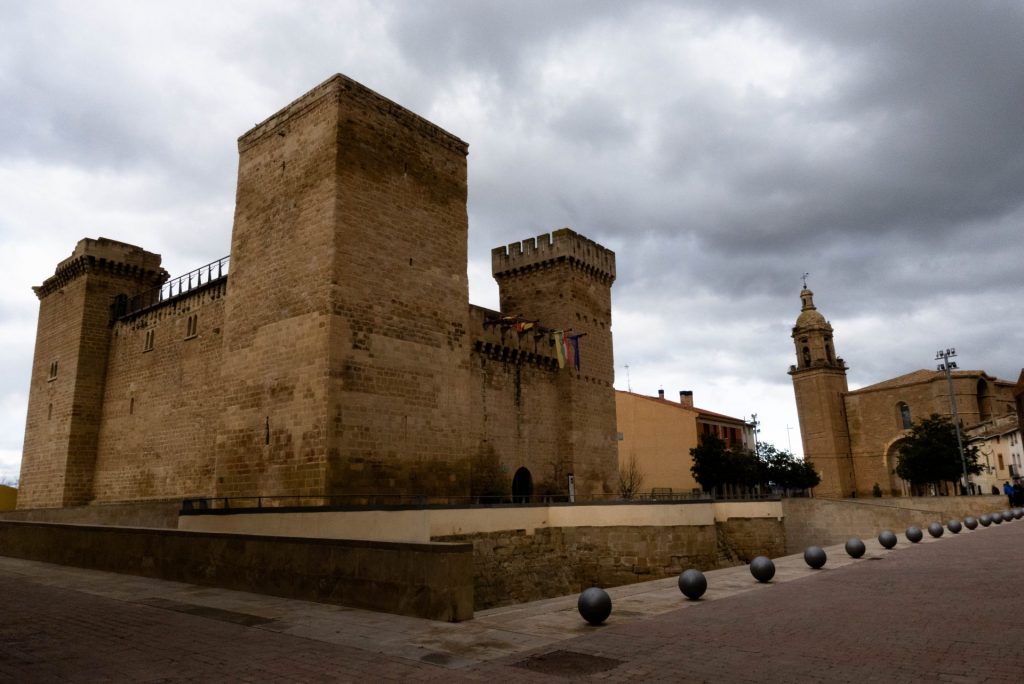
Agoncillo is located at 15km from Logroño and has a population of 1150 inhabitants.
Agoncillo is the only airport in La Rioja, however, what we are interested in in this post is discover its secrets more cultural and historical part.
Museo Würth La Rioja | Contemporary Art
The Würth Museum was inaugurated at the year 2007 and is located in the El Sequero industrial estate, next to the Logistics Centre of the German multinational Würth.
The building of avant-garde architecture is the most outstanding in La Rioja in this style.
This museum exhibits pictorial and sculptural holdings from the Würth collections of Spain and Germany, being one of the most interesting museums in the world. contemporary art of northern Spain.
Castle of Aguas Mansas in Agoncillo
The Castle of Aguas Mansas was built during the 13th and 14th centuries. It has a rectangular ground plan with square towers at its four corners.
The coat of arms of the Calatrava Cross appears on the façade located on the eastern façade, as a sign of belonging to the House of Medrano.
It has now been fitted out to house the municipal buildings of Agoncillo.
Nuestra Señora la Blanca Parish Church

It is a building of a single divided nave in three equal sections and an octagonal chancel with three sections.
The sacristy is situated on the side of the the Epistle It is covered with a simple ribbed ceiling supported by corbels decorated with vegetal motifs and coats of arms.
The OLD TOWER is located at the foot of the Epistle side. On the outside, it is octagonal in shape and is joined by an arch to the buttress immediately before it. In the 18th century, the new tower was erected as it was in a state of ruin.
It highlights the Santa Barbara Chapel located in the first section of the nace in the Gospel wall.
Nuestra Señora de los Dolores Chapel
Of simple construction, it contains a small 18th century altarpiecewith the image of the same name.
Roman bridge over the river Leza
The ruins of a eight-span bridge over the river Leza of which only the ruins of two abutments and the three stocks of the pillars closest to the right bank remain.
It is located in the south of the municipality near the border with the neighbouring municipality of Murillo de Río Leza, in the place known as "Fallen Bridge.
It is not clear whether it belongs to the Roman typology or to the Roman road that linked Caesaraugusta with Vareia. The most recent research dates its construction and early destruction to the middle of the 18th century.
Velilla de Aracanta Sites
The Roman enclave of Velilla is located on a fluvial terrace, at the mouth of the Leza river in the Ebro river. This land is incorporated into the Logroño-Agoncillo airport.
Since 2000, the following have been carried out archaeological campaigns in order to define the origin and chronological use of this area.
The studies so far indicate the possibility of a double Roman occupation, completed in the 14th century by a medieval occupation.
5. Viguera and its peculiar Romanesque chapel

Viguera is a village in the Camero Nuevo region located at 23km from Logroño and has a population of 375 inhabitants.
From Logroño you can reach Viguera on the national 111 with the village to the left of it.
It houses the nuclei of Viguera, Panzares, Castañares de las Cuevas y The Bridge.
Romanesque chapel of San Esteban

The Hermitage of San Esteban of Viguera is a Romanesque building located on the opposite side of the village with respect to the road under some pintoersque crags.
It is possible to pick up the keys in the village to see the inside of the hermitage.
From the road begins the path that climbs steeply upwards along the hillside. The route is marked and takes between 20 and 30 minutes to walk.
Castañares de las Cuevas and its picturesque castle-cave

Without moving from the surroundings of Viguera and just a few metres further on from the San Esteban hermitage, we come to Castañares de las Cuevas and its castle.
Before arriving at the cave castle, at the foot of the road, there is the Parish Church of the Assumption of Castañares de las Cuevas.
This cave castle is part of a cave complex which has been used since ancient times.
The the plan of the castle is irregular and fits in with the layout of the rock and the existing natural caves that enclose its walls. At present, it is impossible to know the interior layout of the complex, as there are no dividing walls except for a short wall in the first enclosure.
Built in masonry porous limestone and river pebbles were used. It consisted of three floors, now lost, judging by the existing windows. The keep had a door leading to the first floor, which communicates with the surrounding cave dwellings on the outside, and another door probably leading to the interior of the fort.
You can access through a private estate with horses.
In this post you can discover all the castles and fortresses of La Rioja.
El Chorrón de Viguera

At a height of 60 metres, El Chorrón de Viguera is the highest waterfall in La Rioja.
Leaving the village of Viguera on the left, take a track that leads you to a parking area. The walking route starts next to a picnic area.
*The photograph was taken in the dry summer of 2022 with just a trickle of water falling. At any other time of the year the Chorrón lives up to its name.
Parish Church of the Assumption of Our Lady

Ya en el núcleo de Viguera nos encontramos con la Iglesia Parroquial de la Asunción construida en el siglo XVI en mampostería y sillarejo. De gran riqueza arquitectónica con torre octogonal construida en ladrillo en el siglo XVIII.
Medieval Bridge of Viguera

Medieval bridge over the river Iregua, rebuilt in the 16th century and located next to the N-111 on the left hand side.
It has 3 arches The central one stands out as it is pointed and more eye-catching.
Other chapels in Viguera
In the area around Viguera we can find the following hermitages in addition to the aforementioned hermitage of San Esteban.
Chapel of Our Lady of the Rosary: Basada en una ermita anterior al siglo XVI fue reformada en el siglo XVIII.
Hermitage of San Marcos. Whose feast day is celebrated on 25 April.
Hermitage of Santa Lucia. Está situada en Panzares. Fue reedificada en 1968 sobre una anterior del siglo XVI.
Nuestro anfitrión en Viguera es El Refugio donde podrás tomarte un café o comer durante tu visita a la zona.
—
We hope that enjoy visiting these 5 villages near Logroño and some more you meet along the way.
For more information you can subscribe to our newsletter and receive free The Guide to Creating your own Roadmap here.




